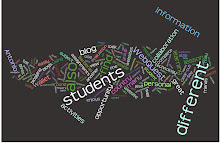I really believe that I have learned that there is a very big difference between integrating technology and learning WITH the integration of technology. By utilizing several different effective teaching strategies within the technology (such as scaffolding or simulation and porblem-solving), the students are much more likely to be engaged in the learning and put that knowledge into long-term memory.
The web-based technology that I looked at and then created made me think about what would be best for my situation, and then I developed a plan to integrate a recovery program for new students coming into the district in the middle of the year. This technology plan for the Spanish program is going to be extremely beneficial for the department. With my evaluation skills of technology as well as using student feedback, we will be able to create this recovery program and it will be very successful. Creating the recovery program in the Spanish Department is my new long-term goal.
I've met my personal goals for this class, but not overall. I think I have so much more to learn either on my own or within a classroom seeting with best practices in technology integration. I'm excited and looking forward to it immensly!
The web-based technology that I looked at and then created made me think about what would be best for my situation, and then I developed a plan to integrate a recovery program for new students coming into the district in the middle of the year. This technology plan for the Spanish program is going to be extremely beneficial for the department. With my evaluation skills of technology as well as using student feedback, we will be able to create this recovery program and it will be very successful. Creating the recovery program in the Spanish Department is my new long-term goal.
I've met my personal goals for this class, but not overall. I think I have so much more to learn either on my own or within a classroom seeting with best practices in technology integration. I'm excited and looking forward to it immensly!

